Lime Hawk-moth
The Lime Hawk-moth is a large hawk-moth, on the wing from May to June. It is commonly found in parks and gardens, as well as woodland, but flies only on warm nights. The caterpillars are quite distinctive: large and green, with pale streaks on each segment and a bluish 'horn' at the tail end. They feed at night on the leaves of lime, Silver Birch and elm, but the adults don't feed at all. During the day, the adults rest to avoid catching the attention of predators. This species hibernates as a chrysalis.
Moths such as the Lime Hawk-moth are common in gardens - why not set up a moth trap at night and see who comes to visit? To attract moths and butterflies into your garden, plant nectar-rich borders and shrubs for them to feed on. To find out more about encouraging wildlife into your garden, visit our Wild About Gardens website: a joint initiative with the RHS, there's plenty of facts and tips to get you started.
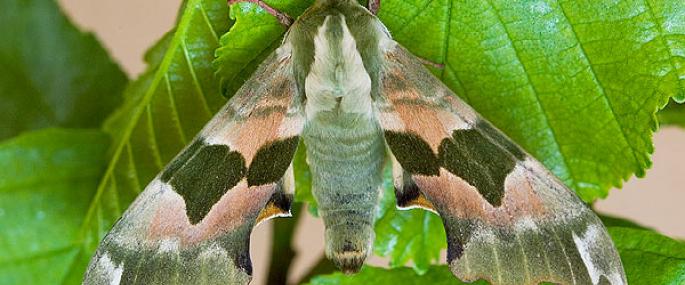
Privet Hawk-moth
Moths such as the Privet Hawk-moth are common in gardens - why not set up a moth trap at night and see who comes to visit? To attract moths and butterflies into your garden, plant nectar-rich borders and shrubs for them to feed on. To find out more about encouraging wildlife into your garden, visit our Wild About Gardens website: a joint initiative with the RHS, there's plenty of facts and tips to get you started.

Peppered Moth
A medium-sized moth, the Peppered Moth is renowned for its markings which provide camouflage against lichen-covered rocks and tree bark. It is on the wing between May and August in parks and gardens, woodland, scrub and hedgerows. The twig-like caterpillars feed on the leaves of a variety of trees and shrubs, including Silver Birch, oak, Bramble and Hawthorn. They have a deep cleft in their heads just like a broken stem, and legs that resemble thorns, making them perfectly camouflaged against the rose species they frequent.
Moths such as the Peppered Moth are common in gardens - why not set up a moth trap at night and see who comes to visit? To attract moths and butterflies into your garden, plant nectar-rich borders and shrubs for them to feed on. To find out more about encouraging wildlife into your garden, visit our Wild About Gardens website: a joint initiative with the RHS, there's plenty of facts and tips to get you started.

Brimstone Moth
The Brimstone Moth is a medium-sized, mainly night-flying moth that is on the wing between April and October when it frequently comes to lights in the garden. It can also be found in woodland, scrub and grassland habitats. The twig-like caterpillars feed on a variety of shrubs in the rose family, including Hawthorn, Blackthorn and Rowan. The Brimstone Moth hibernates as a dense cocoon, usually on the ground.
Moths such as the Brimstone Moth are common in gardens - why not set up a moth trap at night and see who comes to visit? To attract moths and butterflies into your garden, plant nectar-rich borders and shrubs for them to feed on. To find out more about encouraging wildlife into your garden, visit our Wild About Gardens website: a joint initiative with the RHS, there's plenty of facts and tips to get you started.
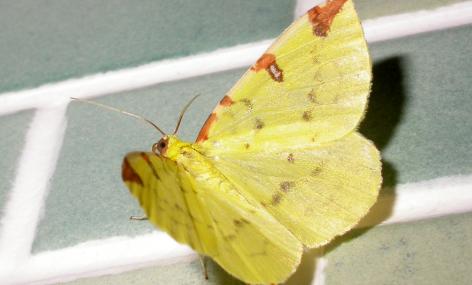
Magpie Moth
The Magpie Moth is a medium-sized moth which is quite butterfly like in appearance. It is on the wing during summer when it can be frequently found in gardens, as well as woodland, scrub and heather moorland. The caterpillars feed on a variety of shrubs, including Hazel, Hawthorn, Privet and currants. The Magpie Moth overwinters as a caterpillar and pupates in late spring.
Moths such as the Magpie Moth are common in gardens - why not set up a moth trap at night and see who comes to visit? To attract moths and butterflies into your garden, plant nectar-rich borders and shrubs for them to feed on. To find out more about encouraging wildlife into your garden, visit our Wild About Gardens website: a joint initiative with the RHS, there's plenty of facts and tips to get you started.
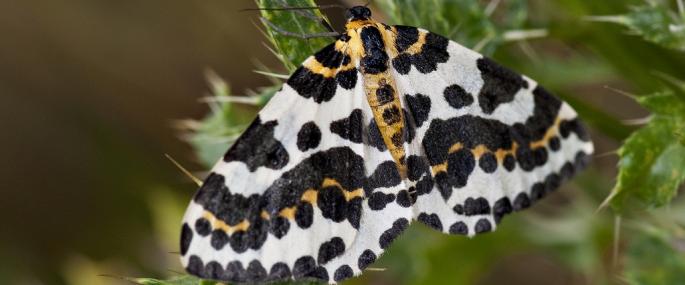
Emperor Moth
The Emperor Moth is a widespread, but never very common, moth of heathland, moorland, woodland rides, sand dunes and grassland scrub. A very large moth, the female has a wingspan of up to 10cm; the male is smaller, with large feathery antennae. During the day, males can be seen flying swiftly about and can be mistaken for butterflies. The females rest in low vegetation during the day, releasing a special scent to attract males. The caterpillars feed on woody plants such as heather, Bramble and Blackthorn, and overwinter as chrysalides, sometimes for two winters.
The Wildlife Trusts manage many heathland, grassland and coastal habitats sympathetically for the benefit of all kinds of moths, including the Emperor Moth. We are also working closely with farmers, landowners and developers to promote wildlife-friendly practices. We have a vision of a 'Living Landscape': a network of habitats and wildlife corridors across town and country, which are good for both wildlife and people. You can support this greener vision for the future by joining your local Wildlife Trust.
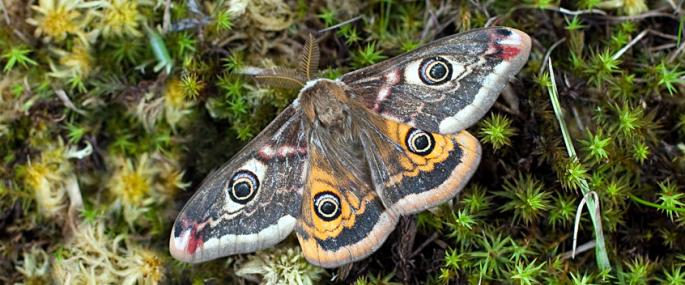
Six-spot Burnet
The Six-spot Burnet Moth is a medium-sized, day-flying moth, commonly found in grasslands, woodland rides and sand dunes, where the caterpillars feed on Common Bird's-foot Trefoil. The adults feed on the nectar of knapweed, thistles and other grassland flowers, and females lay their eggs on the caterpillars' foodplants. The caterpillars hatch and feed, hibernating over at last one winter. They emerge the following spring and pupate in a papery cocoon attached to grass stems.
The Six-spot Burnet Moth relies on sensitive grassland and dune habitats that are disappearing from our countryside. However, The Wildlife Trusts are working closely with farmers, landowners and developers to promote wildlife-friendly practices. We have a vision of a 'Living Landscape': a network of habitats and wildlife corridors across town and country, which are good for both wildlife and people. You can support this greener vision for the future by joining your local Wildlife Trust.
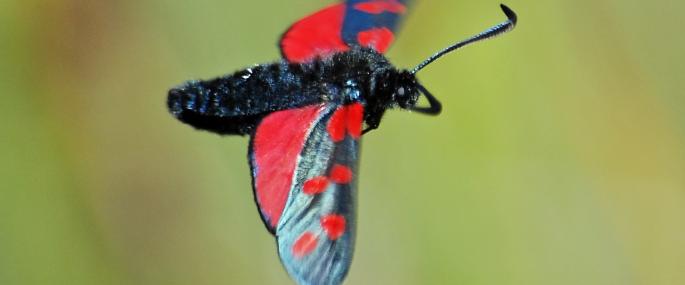
Male-fern
The Male-fern is a large, clump-forming woodland fern which is common throughout the UK. Fresh green fronds unfurl from scaly, brown, underground rhizomes that push through the soil in mid spring. These grow in height in the summer to form impressive stands, but will die back later in the year. Male-ferns are hardy plants and can survive in quite dry conditions, so are ideal for gardens; plant them in shade or borders for attractive, natural cover.
Our gardens are a vital resource for local wildlife, providing corridors of green space between open countryside, allowing species to move about. In fact, the UK's gardens provide more space for nature than all the National Nature Reserves put together. So why not try planting native plants and trees to encourage birds, mammals and invertebrates into your backyard? To find out more about wildlife-friendly gardening, visit our Wild About Gardens website: a joint initiative with the RHS, there's plenty of facts and tips to get you started.

Wall-rue
Wall-rue is a small fern that can be found growing on limestone rocks and in crevices in old walls throughout town and country. It is often found close to other common species of rocks and walls such as Maidenhair Spleenwort and Hart's-tongue Fern.
The Wildlife Trusts recognise the importance of healthy habitats to support all kinds of species, so manage many nature reserves for the benefit of all kinds of wildlife. But these precious sites are under threat from development, intensive agricultural practices and climate change. You can help by supporting your local Trust and becoming a member; you'll find out about exciting wildlife happenings, events on your doorstep and volunteering opportunities, and be helping local wildlife along the way.
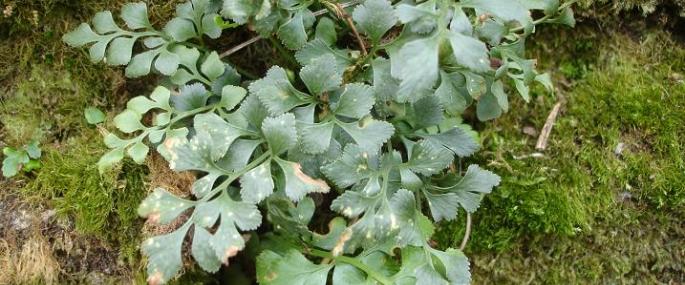
Maidenhair Spleenwort
Maidenhair Spleenwort is a small fern that can be found growing in tufts on rocks, old walls and mossy branches. This pretty fern is ideal for gardens; plant it in sloping rockeries, crevices or walls for attractive cover all year-round. It spreads by means of spores, so new crowns should establish themselves naturally.
Our gardens are a vital resource for local wildlife, providing corridors of green space between open countryside, allowing species to move about. In fact, the UK's gardens provide more space for nature than all the National Nature Reserves put together. So why not try planting native plants and trees to encourage birds, mammals and invertebrates into your backyard? To find out more about wildlife-friendly gardening, visit our Wild About Gardens website: a joint initiative with the RHS, there's plenty of facts and tips to get you started.
